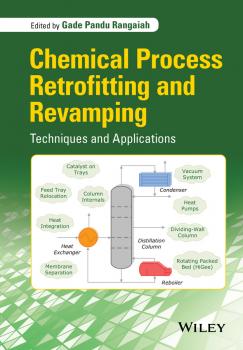Техническая литература
Различные книги в жанре Техническая литератураLEOMA and the US Laser Industry. The Good and Bad Moves for Trade Associations in Emerging High-Tech Industries
This book describes the approaches, both successful and not, to the political and infrastructure issues addressed by the trade association. The intent is to provide guidance to those confronting similar issues, and help them avoid unsuccessful approaches. Includes end-of-chapter summaries Example of documents and approaches that LEOMA used successfully are included and could serve as a guide to other trade associations. Chapter 5 includes figures presenting the unique and effective graphical approach that LEOMA use to improve US national-security export controls
Symbiosis in Fishes. The Biology of Interspecific Partnerships
Symbiosis in Fishes provides comprehensive coverage of the biology of partnerships between fishes and invertebrates, ascending the phylogenetic scale, from luminescent bacteria, sponges and coelenterates to molluscs, crustaceans and echinoderms. Both facultative and obligatory partnerships are reviewed with emphasis on the behavioral, ecological and evolutionary aspects of fish symbiosis. Each of the eight chapters of this book focuses on a different group of partners. The structure, physiology and anti-predatory strategies of each group are described to provide the necessary background for the understanding of their partnerships with fishes. The formation of the associations, the degree of partner specificity and its regulation, as well as the benefits and costs for the fishes and their associates, communication between partners and their possible co-evolution are discussed in each chapter. This is the first attempt to critically review in a single volume all associations of fishes with invertebrates based on the latest studies in these areas, together with studies published many years ago and little cited since then. Symbiosis in Fishes provides a huge wealth of information that will be of great use and interest to many life scientists including fish biologists, ecologists, ethologists, aquatic scientists, physiologists and evolutionary biologists. It is hoped that the contents of the book will stimulate many to further research, to fill in the gaps in our knowledge in this fascinating and important subject. Libraries in all universities and research establishments where biological sciences are studied and taught should have copies of this exciting book.
Engineering Information Security. The Application of Systems Engineering Concepts to Achieve Information Assurance
Engineering Information Security covers all aspects of information security using a systematic engineering approach and focuses on the viewpoint of how to control access to information. Includes a discussion about protecting storage of private keys, SCADA, Cloud, Sensor, and Ad Hoc networks Covers internal operations security processes of monitors, review exceptions, and plan remediation Over 15 new sections Instructor resources such as lecture slides, assignments, quizzes, and a set of questions organized as a final exam If you are an instructor and adopted this book for your course, please email [email protected] to get access to the additional instructor materials for this book.
Seafood Processing. Technology, Quality and Safety
Part of the new IFST Advances in Food Science Series, Seafood Processing: Technology, Quality and Safety covers the whole range of current processes which are applied to seafood, as well as quality and safety aspects. The first part of the book (‘Processing Technologies’) covers primary processing, heating, chilling, freezing, irradiation, traditional preservation methods (salting, drying, smoking, fermentation, etc), frozen surimi and packaging. The subjects of waste management and sustainability issues of fish processing are also covered. In the second part (‘Quality and Safety Issues’), quality and safety analysis, fish and seafood authenticity and risk assessment are included.
Chemical Process Retrofitting and Revamping. Techniques and Applications
The proposed book will be divided into three parts. The chapters in Part I provide an overview of certain aspect of process retrofitting. The focus of Part II is on computational techniques for solving process retrofit problems. Finally, Part III addresses retrofit applications from diverse process industries. Some chapters in the book are contributed by practitioners whereas others are from academia. Hence, the book includes both new developments from research and also practical considerations. Many chapters include examples with realistic data. All these feature make the book useful to industrial engineers, researchers and students.
Advanced Control of AC / DC Power Networks. System of Systems Approach Based on Spatio-temporal Scales
The power engineering domain is facing huge challenges, with an increasing interest in intermittent renewable energies which are imposing major technical limitations. Operating ever closer to their limits, the industry-standard AC power grids are subject to instabilities. This book presents an insight into DC grid systems, offering interesting issues to well controlled power grids, in contrast to current AC systems which provide the simplest and most economic connection method for short distances.
Fundamentals of Conjugated Polymer Blends, Copolymers and Composites. Synthesis, Properties, and Applications
Since their discovery in 1977, the evolution of conducting polymers has revolutionized modern science and technology. These polymers enjoy a special status in the area of materials science yet they are not as popular among young readers or common people when compared to other materials like metals, paper, plastics, rubber, textiles, ceramics and composites like concrete. Most importantly, much of the available literature in the form of papers, specific review articles and books is targeted either at advanced readers (scientists/technologists/engineers/senior academicians) or for those who are already familiar with the topic (doctoral/postdoctoral scholars). For a beginner or even school/college students, such compilations are bit difficult to access/digest. In fact, they need proper introduction to the topic of conducting polymers including their discovery, preparation, properties, applications and societal impact, using suitable examples and already known principles/knowledge/phenomenon. Further, active participation of readers in terms of “question & answers”, “fill-in-the-blanks”, “numerical” along with suitable answer key is necessary to maintain the interest and to initiate the “thought process”. The readers also need to know about the drawbacks and any hazards of such materials. Therefore, I believe that a comprehensive source on the science/technology of conducting polymers which maintains a link between grass root fundamentals and state-of-the-art R&D is still missing from the open literature.
Fundamentals of Amorphous Solids. Structure and Properties
Long awaited, this textbook fills the gap for convincing concepts to describe amorphous solids. Adopting a unique approach, the author develops a framework that lays the foundations for a theory of amorphousness. He unravels the scientific mysteries surrounding the topic, replacing rather vague notions of amorphous materials as disordered crystalline solids with the well-founded concept of ideal amorphous solids. A classification of amorphous materials into inorganic glasses, organic glasses, glassy metallic alloys, and thin films sets the scene for the development of the model of ideal amorphous solids, based on topology- and statistics-governed rules of three-dimensional sphere packing, which leads to structures with no short, mid or long-range order. This general model is then concretized to the description of specific compounds in the four fundamental classes of amorphous solids, as well as amorphous polyethylene and poly(methyl)methacrylate, emphasizing its versatility and descriptive power. Finally, he includes example applications to indicate the abundance of amorphous materials in modern-day technology, thus illustrating the importance of a better understanding of their structure and properties. Equally ideal as supplementary reading in courses on crystallography, mineralogy, solid state physics, and materials science where amorphous materials have played only a minor role until now.
Advanced Composite Materials for Automotive Applications. Structural Integrity and Crashworthiness
The automotive industry faces many challenges, including increased global competition, the need for higher-performance vehicles, a reduction in costs and tighter environmental and safety requirements. The materials used in automotive engineering play key roles in overcoming these issues: ultimately lighter materials mean lighter vehicles and lower emissions. Composites are being used increasingly in the automotive industry due to their strength, quality and light weight. Advanced Composite Materials for Automotive Applications: Structural Integrity and Crashworthiness provides a comprehensive explanation of how advanced composite materials, including FRPs, reinforced thermoplastics, carbon-based composites and many others, are designed, processed and utilized in vehicles. It includes technical explanations of composite materials in vehicle design and analysis and covers all phases of composite design, modelling, testing and failure analysis. It also sheds light on the performance of existing materials including carbon composites and future developments in automotive material technology which work towards reducing the weight of the vehicle structure. Key features: Chapters written by world-renowned authors and experts in their own fields Includes detailed case studies and examples covering all aspects of composite materials and their application in the automotive industries Unique topic integration between the impact, crash, failure, damage, analysis and modelling of composites Presents the state of the art in composite materials and their application in the automotive industry Integrates theory and practice in the fields of composite materials and automotive engineering Considers energy efficiency and environmental implications Advanced Composite Materials for Automotive Applications: Structural Integrity and Crashworthiness is a comprehensive reference for those working with composite materials in both academia and industry, and is also a useful source of information for those considering using composites in automotive applications in the future.
Automatisieren mit STEP 7 in KOP und FUP. Speicherprogrammierbare Steuerungen SIMATIC S7-300/400
SIMATIC ist das weltweit etablierte Automatisierungssystem fur die Realisierung von Industriesteuerungen fur Maschinen, fertigungstechnische Anlagen und verfahrenstechnische Prozesse. Erforderliche Steuerungs- und Regelungsaufgaben werden mit der Engineeringsoftware STEP 7 in verschiedenen Programmiersprachen formuliert. Kontaktplan (KOP) und Funktionsplan (FUP) verwenden fur die Darstellung der Steuerungsfunktionen grafische Symbole – ahnlich wie in einem Stromlaufplan oder bei elektronischen Schaltkreissystemen. In der sechsten Auflage beschreibt das Buch diese grafikorientierten Programmiersprachen in Verbindung mit der Engineeringsoftware STEP 7 V5.5 fur die Automatisierungssysteme SIMATIC S7-300 und S7-400. Neue Funktionen dieser STEP 7-Version betreffen besonders den CPU-Webserver und PROFINET IO, wie beispielsweise die Anwendung von I-Devices, Shared Devices und Taktsynchronitat. Das Buch bietet Unterstutzung fur alle Anwender von SIMATIC-S7-Steuerungen. Anfanger fuhrt es in das Gebiet der speicherprogrammierbaren Steuerungen ein, dem Praktiker zeigt es den speziellen Einsatz des Automatisierungssystems SIMATIC S7. Alle Programmierbeispiele des Buches – und noch einige mehr – stehen als Download auf der Internetseite des Verlags unter www.publicis-books.de/ bereit.









